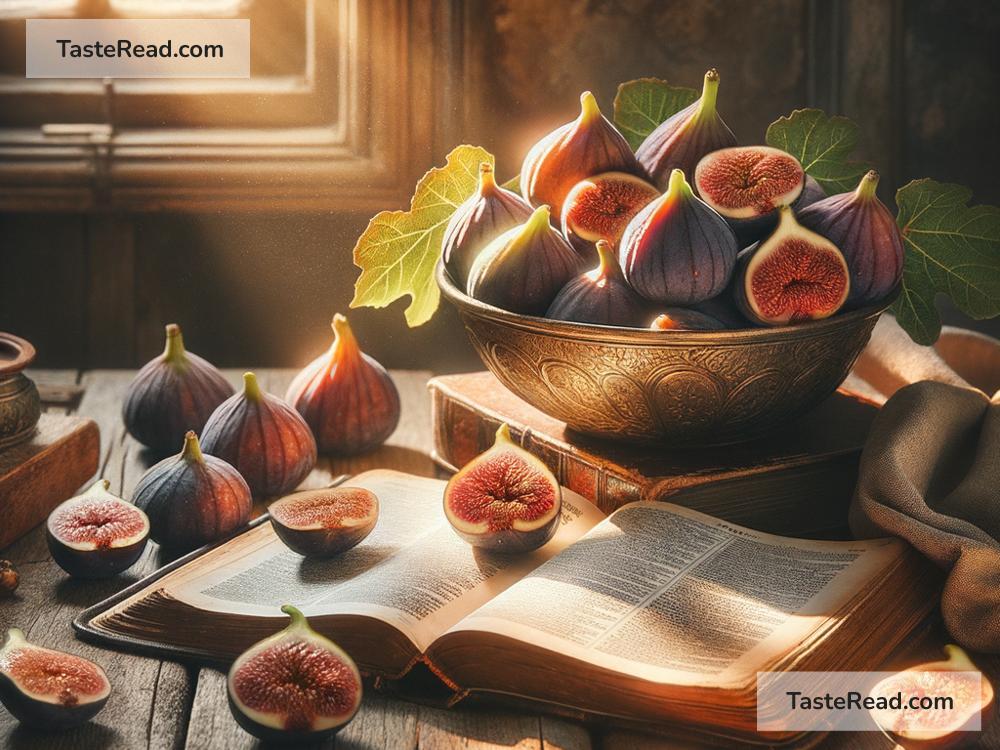The Curious Story of Figs in Biblical References
The Bible is filled with stories, lessons, and symbols that have inspired people for thousands of years. Among these symbols, one little fruit holds a surprising amount of significance: the fig. While it might not seem extraordinary at first glance, figs play a unique role in the Bible, appearing in both narratives and teachings. Let’s explore the curious story of figs and their importance in biblical references.
Figs: A Common Fruit in Biblical Times
Figs were a common and important fruit in the ancient Middle East, where the events of the Bible unfolded. The fig tree was one of the first plants cultivated by humans, and references to figs were familiar to people during biblical times. The trees grew easily in warm climates and provided a nutritious, sweet fruit that could be eaten fresh or dried for preservation. They were so central to daily life that fig trees often symbolized prosperity and abundance in biblical literature.
For the people of ancient Israel, figs were more than just a source of food—they were also associated with peace and security. A common biblical phrase, “every man under his vine and under his fig tree,” was used to describe a time of safety, happiness, and personal well-being (e.g., 1 Kings 4:25 and Micah 4:4). But the symbolism of figs goes deeper than this simple image of contentment.
The Fig in the Garden of Eden
One of the first appearances of figs in the Bible comes in the story of Adam and Eve in the Garden of Eden (Genesis 3). After Adam and Eve ate the forbidden fruit and realized they were naked, they sewed fig leaves together to make clothing for themselves. While the text doesn’t say that the forbidden fruit was a fig—it has been traditionally depicted as an apple—fig leaves were the material they chose to cover their shame.
In this context, fig leaves represent human efforts to hide wrongdoing or guilt. Some scholars see the fig leaf as symbolic of humanity’s tendency to try and cover up mistakes, rather than addressing them honestly. This interpretation has made fig leaves an iconic representation of modesty and concealment.
The Barren Fig Tree: A Lesson on Faith and Fruitfulness
One of the most famous biblical references to figs comes from the teachings of Jesus. In the Gospels of Matthew (21:18-22) and Mark (11:12-14), there is a story about a barren fig tree. Jesus was hungry and came across a tree that appeared healthy but had no fruit. In response, He cursed the tree, and it withered.
This story might seem harsh at first, but it carries a deeper meaning. The fig tree symbolizes people or communities who appear outwardly righteous but fail to produce spiritual “fruit”—actions that reflect kindness, faith, and love. Through this act, Jesus taught a lesson about the importance of living a fruitful life, not just putting on appearances. It reminds us that our faith and actions should be meaningful and genuine.
The Fig Tree as a Sign of the Times
Figs also appear in biblical teachings about recognizing signs from God. Jesus used the fig tree as a metaphor to explain how people should understand the signs of changing times. In Matthew 24:32-35, He said, “Learn this lesson from the fig tree: As soon as its twigs get tender and its leaves come out, you know that summer is near.” Here, the fig tree represents the ability to discern spiritual or historical events and prepare for what is coming.
This lesson encourages vigilance and readiness. Just as people in ancient times knew how to read the seasons by observing fig trees, Jesus reminded His followers to be aware of spiritual teachings and the unfolding of God’s plan.
Figs as Symbols of Healing and Provision
Figs appear not only in symbolic stories but also in practical uses in the Bible. In 2 Kings 20:7 and Isaiah 38:21, a poultice made from figs is used to heal King Hezekiah when he falls ill. This highlights the value of figs as a source of nourishment and medicine, underscoring their role in God’s provision for humanity.
In practical terms, the fig tree was seen as a blessing, both for its shade and fruit. Even when used in metaphors, figs often symbolized God’s care and the abundance He provides to His people.
A Fruit Full of Meaning
From the Garden of Eden to Jesus’ teachings, figs carry rich symbolic meaning in the Bible. They represent human attempts to cover up sin, the importance of spiritual fruitfulness, and the ability to recognize God’s plans. At the same time, they serve as practical examples of God’s provision and care.
The curious story of figs in biblical references reminds us how even small, everyday things can teach us about deeper truths. The humble fig challenges us to live a life that produces spiritual fruit, to trust in God’s provision, and to recognize the signs of His presence in our lives. Next time you eat a fig or see a fig tree, take a moment to reflect on the powerful lessons wrapped up in this little fruit. Who would have thought such a simple fruit could have such a big story?


